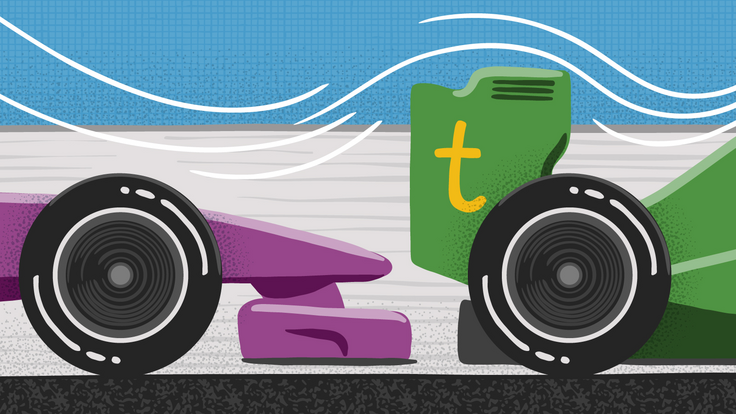Day in the life: Labfest
 |
 |
In August, robots, mummies, and giant jellyfish took over Chicago's Millennium Park. Fortunately, the invasion was peaceful—just part of the fun at the latest LabFest, a kind of pumped-up, hands-on outdoor science fair aimed to engage Chicagoans in the excitement of science.
"It's been an awesome, awesome day," said Rabiah Mayas, science director for Science Chicago, a yearlong series of LabFests and other educational events. As Mayas talked, one of the jellyfish—really a balloon-swaddled human—jiggled its way through the crowd.
The creatures came with a full cast of scientists, educators, and museum staffers who set up games and demos in the popular park, nestled between the Windy City's skyscrapers and the shore of Lake Michigan. During four midday hours, hundreds of kids and parents, and even a few suit-coated businesspeople, wandered through, stopping to tinker with LEGO bricks, ogle exotic insects, and fuel a bicycle-powered blender. True daredevils stormed a pool of Oobleck, a drippy mixture of cornstarch and water that acts like a solid when a quick burst of force, like the weight of a running kid, hits its surface.
"There's something for everyone here," Mayas said.
Since September 2008, Science Chicago has brought together more than 140 of the area's academic, corporate, and non-profit institutions to showcase the region's scientific resources and the thrill of investigation. Throughout the year, organizers arranged behind-the-scenes tours, talks with experts, and resources for schoolteachers. The biggest hits were the 14 one-day LabFests, held at parks across the city and suburbs. The Millennium Park event, on August 21, was the season finale and attracted about 8000 visitors.
 |
As always, scientists from Fermilab, located 40 miles west of Chicago, were there. They set up a tent where kids raced balls down a "gravity accelerator" and learned why it's easier to keep your bike upright when you're pedaling faster. Physicist David Schmitz wowed spectators with a sample of the liquid nitrogen that helps to chill Fermilab's Tevatron accelerator complex. Turns out that the ultra-cold fluid can also turn a banana into a rock-solid hammer and make a rubber ball shatter like a light bulb.
The display was dazzling, even for the youngest eyes watching the stage. "But when you get kids at the perfect age, about the time they're in middle school, it's really fun," Schmitz said, "because a number of them are really interested in understanding how the physics works."
He paused as the wacky experimenter named Beakman, star of the TV show Beakman's World, set off a soap-bubble eruption in a miniature volcano. Kids whooped and cheered.
"It's exciting to watch them suddenly understand," Schmitz said, "to convince them that science relates to everyday life, and that it can be fun."
Text: Rachel Carr
Photos: Reidar Hahn, Fermilab
Click here to download the pdf version of this article.






